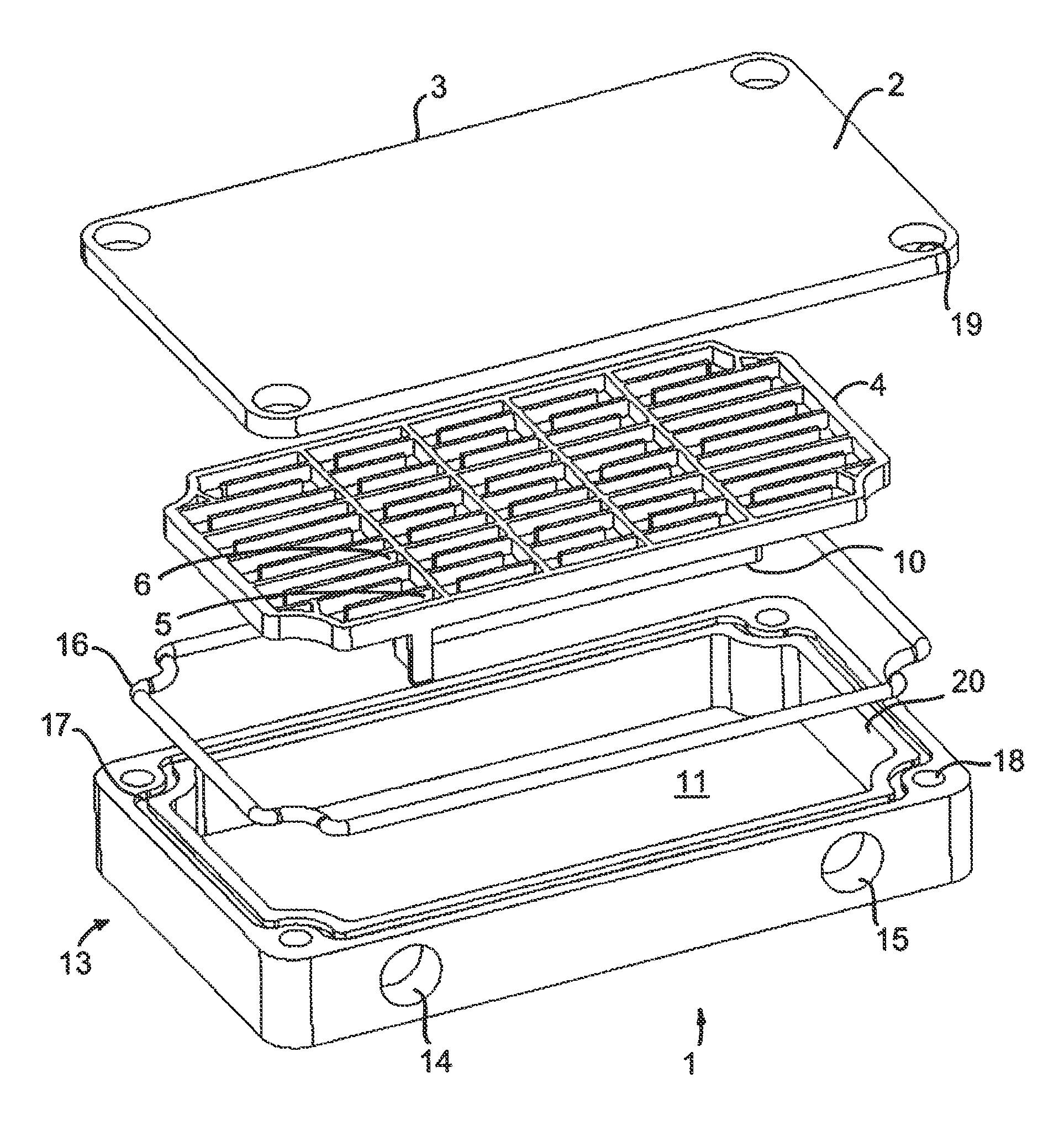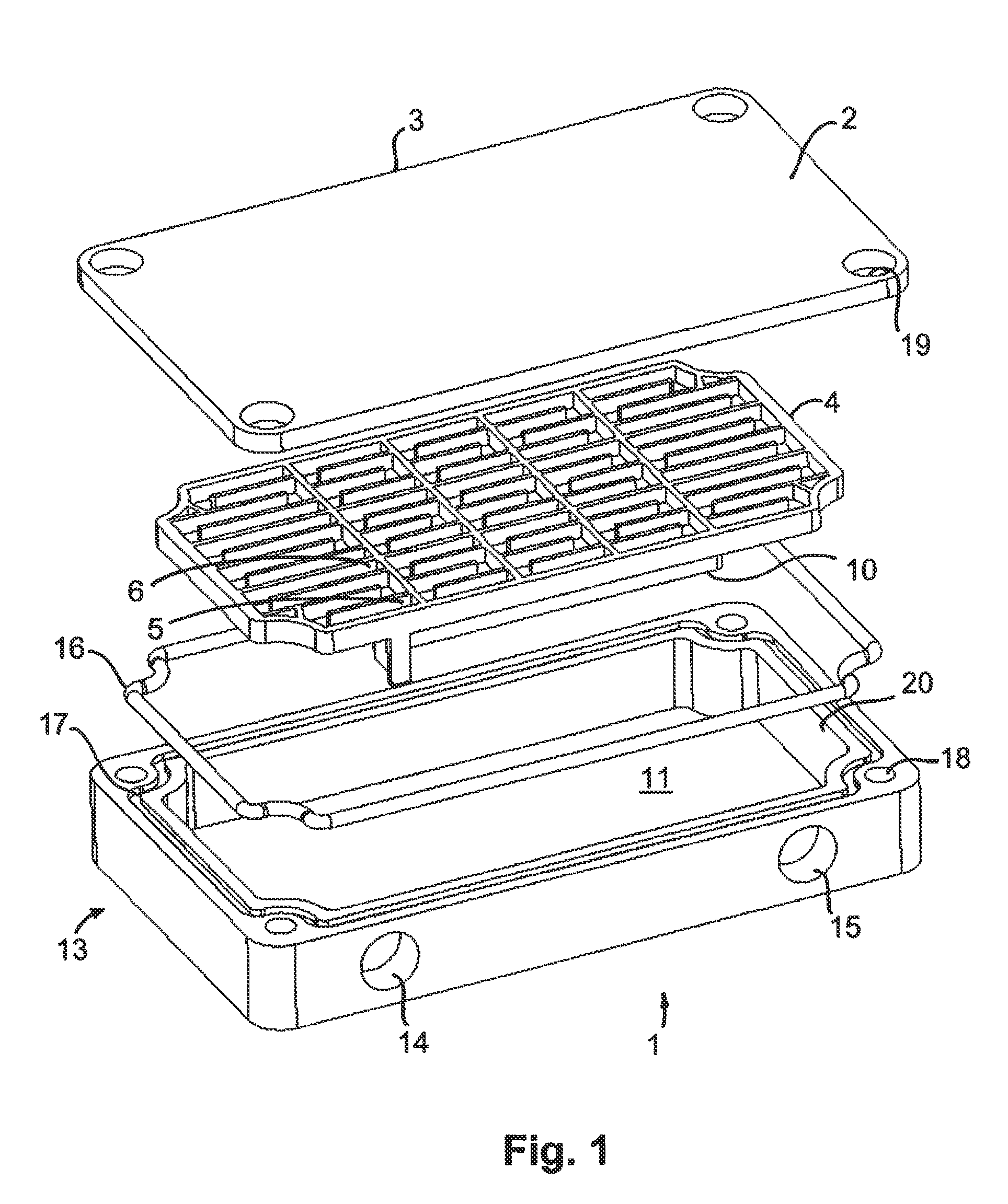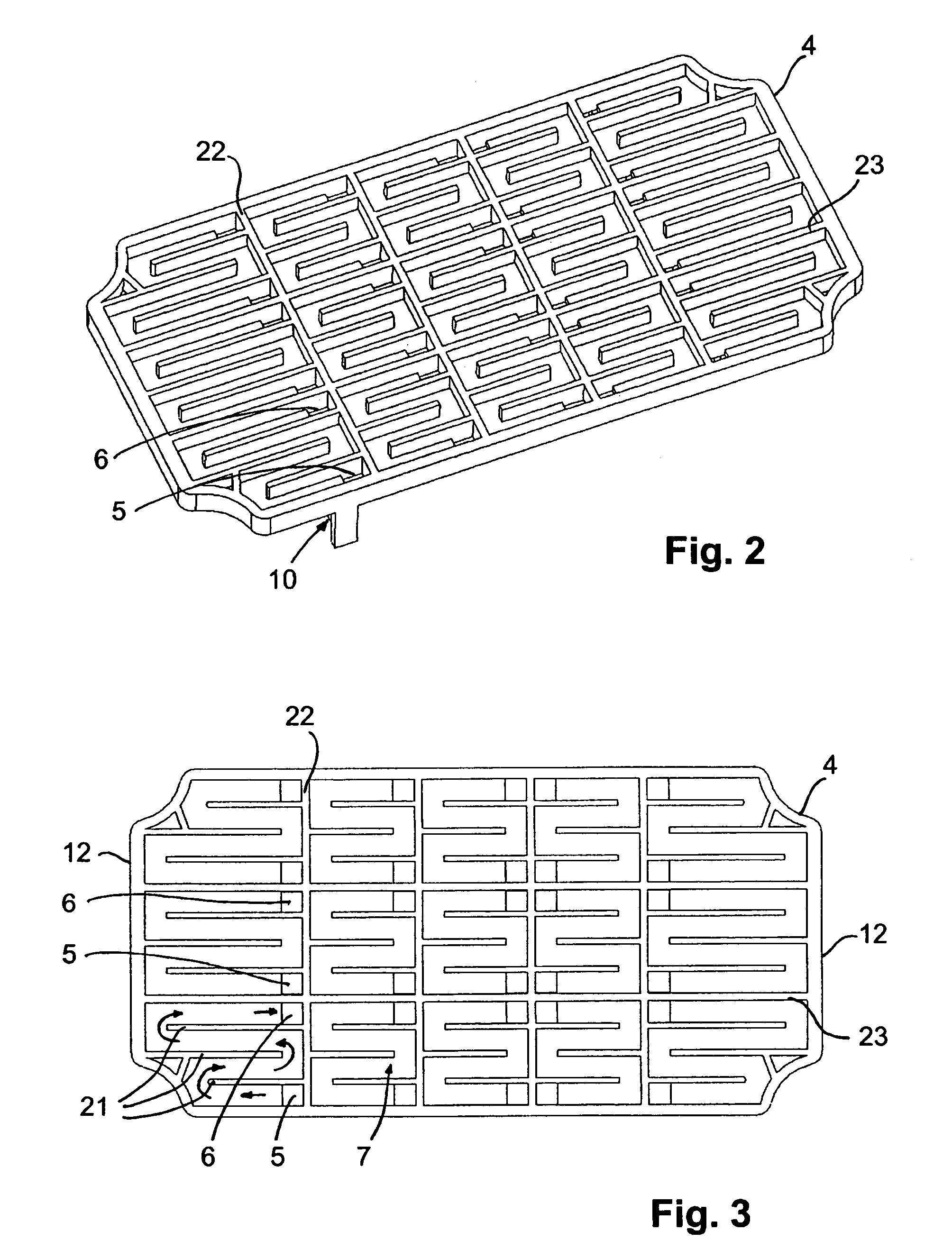Cooling unit and flow distributing element for use in such unit
a technology of flow distribution and cooling unit, which is applied in the direction of laminated elements, mounting of support structures, lighting and heating apparatus, etc., can solve the problems of limiting an increase in cooling capacity, reducing the operation of semiconductor devices, and reducing the temperature gradient, so as to improve the cooling conditions of semiconductor devices in the device, reduce flow resistance, and equal internal temperature
- Summary
- Abstract
- Description
- Claims
- Application Information
AI Technical Summary
Benefits of technology
Problems solved by technology
Method used
Image
Examples
Embodiment Construction
[0033]Turning now to FIG. 1, the cooling unit 1 consists of a bottom part 13, formed as a bathtub with a plane bottom plate 11 and a frame part 20. The bottom part 13 has holes 14 and 15 for liquid connections from a pipe system or the like.
[0034]A distributing element 4 fits with the internal surfaces of the frame part 20 of the bottom part 13. When the distributing element 4 is placed in the bottom part 13, it divides this into a top compartment and a bottom compartment. The bottom compartment is formed between the bottom plate 11 and the distributing element 4, and is further divided into two chambers, as will be described later. The holes 14 and 15 is in connection with this bottom compartment, and fluid communication between the bottom compartment and the top compartment will only occur through inlets 5 and outlets 6 in the distributing element 4, described in details later.
[0035]A top plate 3 capsulate the top compartment, when it is mounted on the bottom part 13, by means of ...
PUM
 Login to View More
Login to View More Abstract
Description
Claims
Application Information
 Login to View More
Login to View More - R&D
- Intellectual Property
- Life Sciences
- Materials
- Tech Scout
- Unparalleled Data Quality
- Higher Quality Content
- 60% Fewer Hallucinations
Browse by: Latest US Patents, China's latest patents, Technical Efficacy Thesaurus, Application Domain, Technology Topic, Popular Technical Reports.
© 2025 PatSnap. All rights reserved.Legal|Privacy policy|Modern Slavery Act Transparency Statement|Sitemap|About US| Contact US: help@patsnap.com



